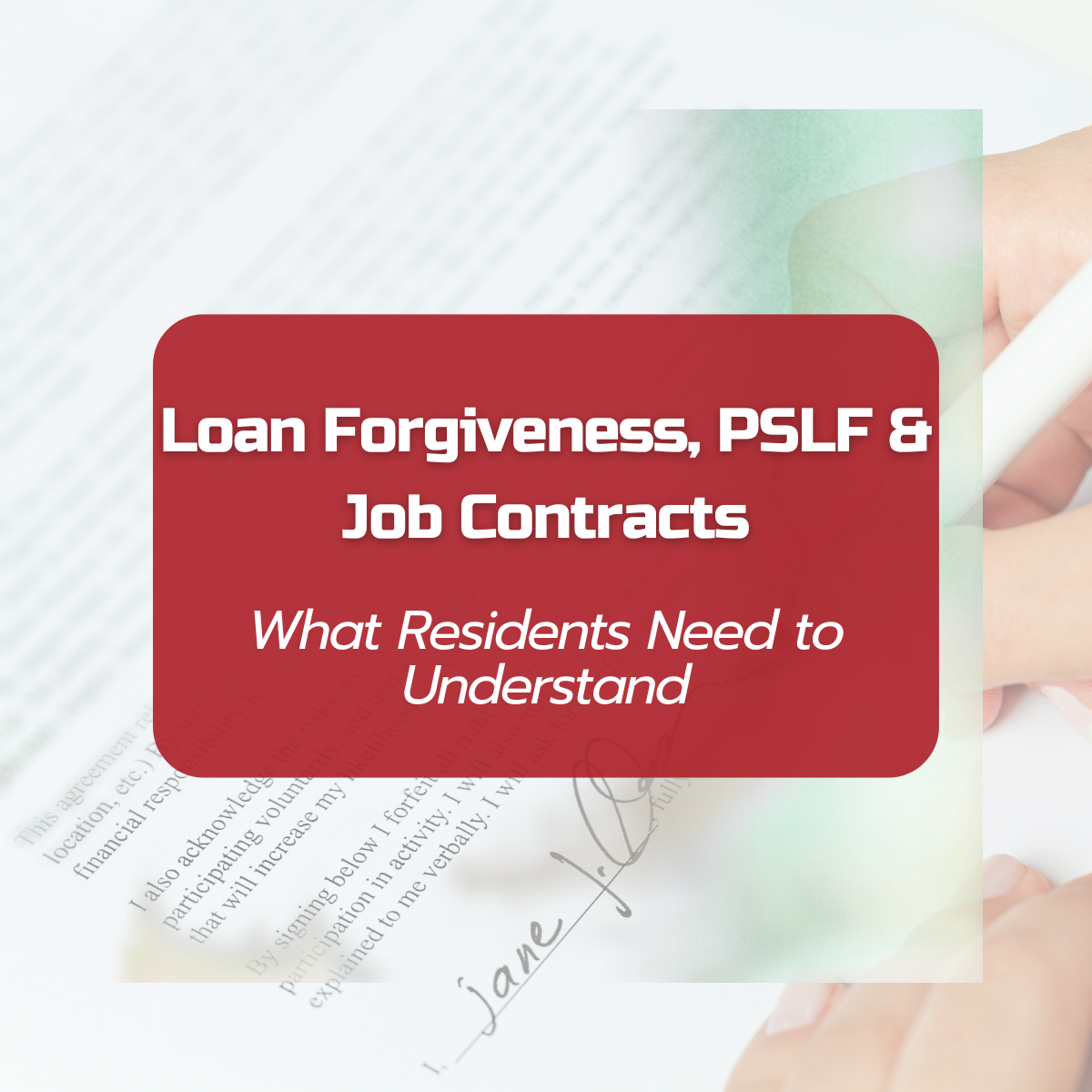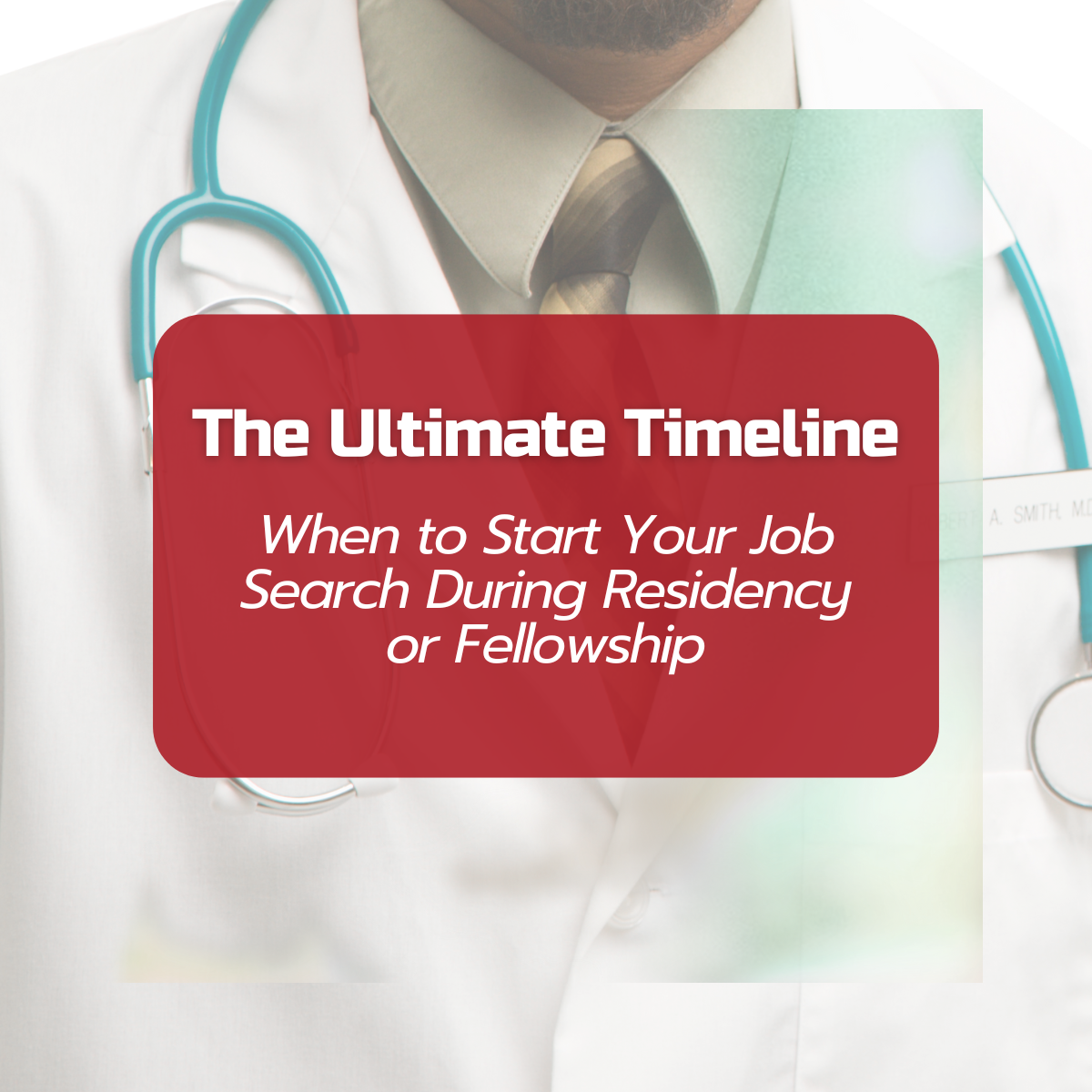Loan Forgiveness, PSLF & Job Contracts: What Residents Need to Understand
Student loan debt is one of the heaviest burdens new physicians carry into their careers. With many residents owing well into six figures, it’s no surprise that programs like Public Service Loan Forgiveness (PSLF) are front of mind when evaluating job opportunities. But here’s what many don’t realize: your employment contract can directly impact your eligibility for loan forgiveness.
Before you sign your first physician contract, here’s what you need to understand about PSLF, loan repayment programs, and how your job affects your options.
What Is PSLF?
Public Service Loan Forgiveness is a federal program that forgives the remaining balance on Direct Loans after you make 120 qualifying monthly payments under an eligible repayment plan, while working full-time for a qualifying employer (typically government or nonprofit hospitals).
Key requirements include:
- Direct federal student loans
- Enrollment in an income-driven repayment plan
- Full-time employment with a qualifying nonprofit or government employer
- 120 qualifying monthly payments (about 10 years)
How Your Job Contract Impacts PSLF
Not all physician jobs qualify for PSLF. Here’s where contracts matter:
- Employer type: To qualify, you must be employed by a nonprofit or government organization. Private practices and for-profit hospitals typically don’t count.
- Employment status: Contracts must define you as a full-time employee. Some positions structured as “independent contractor” roles may disqualify you.
- Hours: Full-time generally means 30+ hours per week. Make sure this is specified in your contract.
- Loan repayment incentives: Some contracts include employer-based loan repayment, which can complement or replace PSLF depending on the terms.
Other Loan Forgiveness and Repayment Programs
Beyond PSLF, there are additional federal and state programs that can help reduce debt:
- NHSC Loan Repayment Program: Offers loan repayment in exchange for service in underserved communities.
- State Loan Repayment Programs: Many states provide financial incentives for physicians working in shortage areas.
- Employer Loan Assistance: Some hospitals and health systems include loan repayment as part of their recruitment package.
Questions to Ask About Loans and Your Contract
- Does this employer qualify for PSLF?
- Will I be classified as an employee or an independent contractor?
- Does the contract include loan repayment assistance, and how is it structured?
- How does my repayment plan interact with the job’s benefits?
- What happens if I leave the job before completing the required service period?
Taking Control of Your Debt Strategy
Loan forgiveness isn’t just about making payments — it’s about aligning your employment contract with your repayment goals. A contract that looks good on the surface may unintentionally block you from qualifying for PSLF, or it may offer loan assistance that changes your repayment approach.
Before committing, use our Physician Contract Checklist to review how your contract impacts your finances. For a deeper dive, ContractGuard MD can help you understand how your agreement fits with loan repayment and forgiveness opportunities.
Frequently Asked Questions
Do all hospital jobs qualify for PSLF?
No. Only nonprofit and government hospitals count. For-profit employers are excluded from PSLF.
Can I still qualify for PSLF if I change jobs?
Yes, as long as your new position is with another qualifying employer and you continue making eligible payments.
Does employer loan repayment affect PSLF?
It can. Employer-based repayment may reduce your balance faster, but you should evaluate how it interacts with PSLF before deciding.
Is PSLF worth pursuing as a physician?
For many physicians with high debt and nonprofit employment, PSLF can be a powerful tool. But it depends on your career goals and job opportunities.




